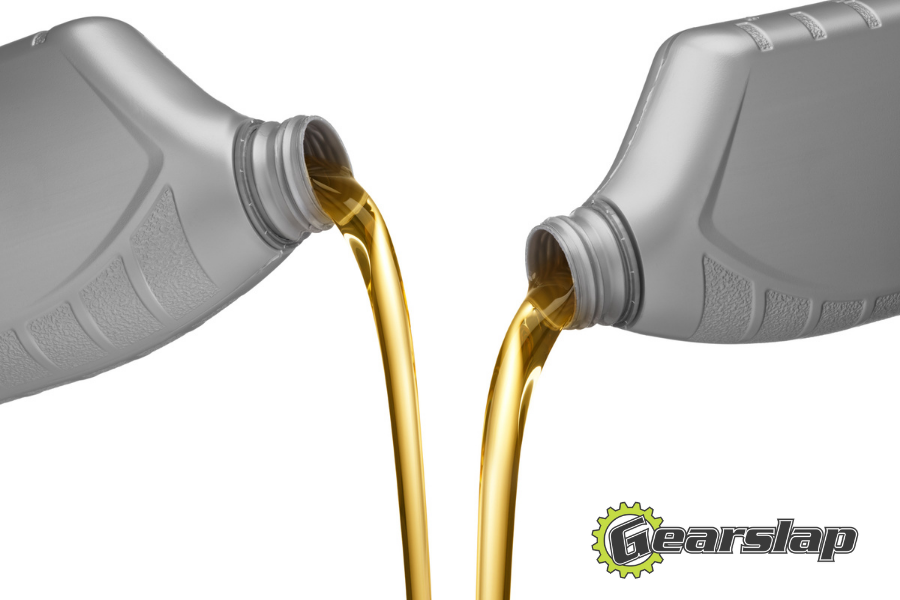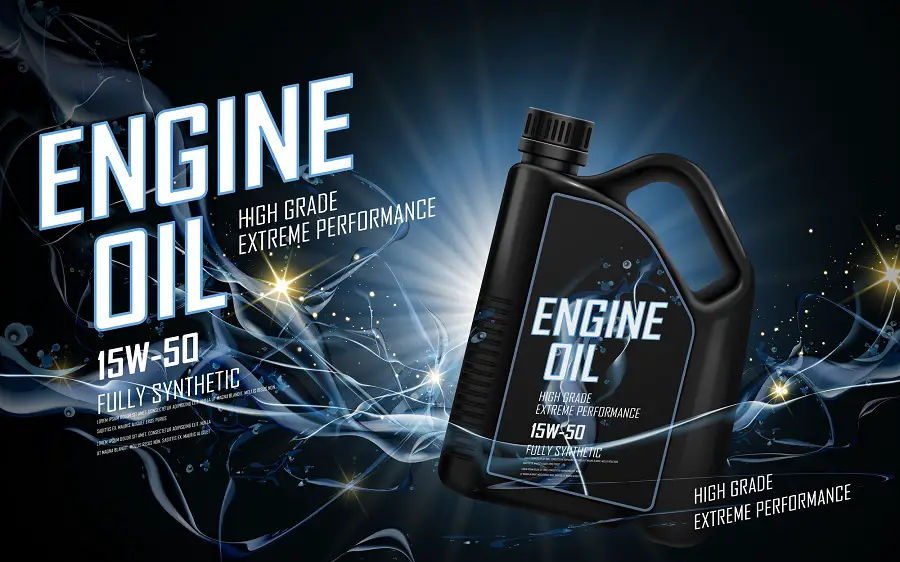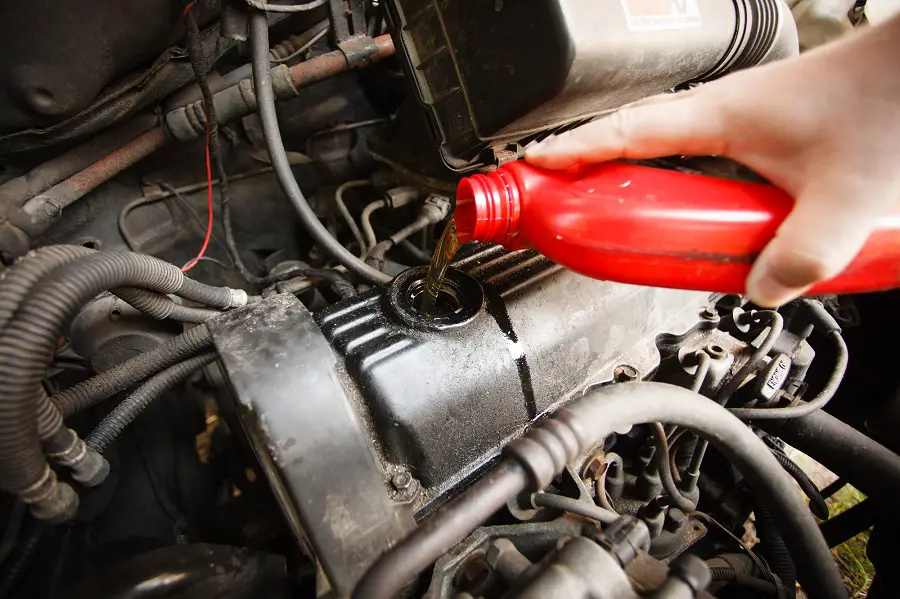Have you ever been on a road trip when your “low oil” light comes on?
I used to carry a spare quart of oil just for this type of occasion (I know, total nerd thing to do). It only took one time in the middle of Wyoming for me to realize that you can’t pick up a bottle of Mobil 1 0W-20 Synthetic motor oil at the nearest Sinclair gas station.
But what do you do if you don’t have a spare quart of oil on hand? Can you just grab the “closest” type of oil and add it to your engine? Can you mix different oil weights or brands together?
Car maintenance might not be up there with going to the dentist every year, but it really comes close. Oil changes are necessary for keeping a car running. Fresh oil can help with fuel economy and the wrong oil grade can lead to shorter engine life. Motor oil matters to the “health” of your engine.
But what do you do in the time between oil change intervals – especially if you have an older car that leaks, or burns, engine oil. Higher mileage oil exists for these cases and is better than regular engine oil. But an engine that burns oil will consume it over time. How do you keep your car from running low and still avoid carrying a case around with you?
We’ll answer these questions and more in this guide, giving you a better understanding of how all weights and types go together.

The Quick and Dirty Details of Engine Oils
First and foremost, getting an oil change is the best way to extend the life of your vehicle. It’s a simple answer and should be the common starting place for our discussion.
Cars get hot, and vehicles get cold, but your engine has to work in all conditions. Oil protects your vehicle’s engine from wearing out from the high heat and friction produced in normal driving conditions.
So, what about all of those weights and types? Can you mix 5w30 and 10w40? If you’ve ever gotten your oil change done and the little sticker in the window says something like 5W-30, you’re looking at a multigrade oil.
The breakdown of the numbers is straightforward: the 5 refers to the coldest temperature where the oil will still flow, the W refers to “winter,” not weight, and the 30 on the end means that the oil warms up and protects like a classic 30 weight oil. The first number tells how the oil acts in cold weather.
Weight is simply how well an oil flows at the standard temperature of most motor vehicles. Who sets the weight? The Society of Automotive Engineers (SAE) is a group of super brains that worry about all of the proverbial nuts and bolts of cars today.
Those super-nerds realized that oil has to flow well to protect internal components, but not so thickly that it locks up the engine. Too thick of oil is just as bad as too thin.
We went into this in-depth in our “what do the numbers on motor oil mean?” article. In there we discuss everything from base oil, oil viscosities and how operating temperature impacts oils. It’s a nice read, especially if you’ve ever wondered what “5W-30 Oil” means on the label of your bottle of oil.
But, back to the question at hand – can you mix the different weights?
Can You Mix Different Oil Weights or Grades?
Given that standards are in place, does that mean you can mix and match oil weights? The truth is simple: don’t mix two different oils that have different weights (viscosities). Viscosity Grades might sound pretty scientific, but the simple fact is that this is what keeps your engine running smoothly.
A common question is whether you can mix 5w30 and 10w40. No, you don’t want to blend two different weights together.
We have all been in a situation where we’re trying to make a dollar out of 15 cents, which usually includes keeping the car running on a tight budget.
You can indeed use the same oil weight already in the vehicle, but mixing weights just isn’t recommended.
What About Mixing Types or Colors of Oils Together?
Open up an owner’s manual, and you might feel a bit overwhelmed. The maintenance schedules may seem like they want to extract as much cash as possible, but it’s really for your own vehicle’s health and longevity.
If you’re the type of person that wants to drive a car until the wheels fall off, getting the best oil change possible is the way to make that goal come to life.
Synthetic oil is the top manufacturer’s pick, as this refined oil has few impurities present. In this case, impurities are the sludge that slows your engine down and causes problems down the road. We don’t like problems. Problems = money.
Saving money by getting the good stuff upfront sounds complicated, but a synthetic oil change is the best way to care for your vehicle and keep it from wearing down prematurely. The key to saving money is to realize the power of preventative maintenance.
While it’s true that the American Petroleum Institute requires all motor oil to have the same ingredients essentially, you still don’t want to mix synthetic and conventional motor oils. Think about it: if synthetic is the top of the line and conventional motor oil is at the bottom, what purpose would mixing the two make?
If your oil is running low and you just don’t have it in the budget to get an oil change, go ahead and use the same motor oil type to bring your oil levels back up safely. This protects your investment.
When to Use Caution
Remember when Ghostbusters warned you not to cross the streams? Well, I’m warning you not to cross the oil streams either. By that, I mean you want to make sure that you aren’t mixing motor oil with other types of oil. Power steering fluid? Bad combo. Automatic transmission fluid (ATF) oil? Bad combo.
The two oils just do not mix at all. Crossing these oil streams leads to severe problems for your vehicle. Motor oil in a power steering fluid reservoir means a costly trip to the mechanic shop to have everything drained and flushed out – if not replaced completely.
Can You Mix Different Brands of Motor Oil?
So let’s say that you skip over crossing the oil streams, but you start with Quaker State oil and top up your oil levels with Pennzoil. Is it possible that using multiple brands of oil in your engine is bad? Is that going to be the same as dangerously crossing the oil streams? (I know, we’re sticking to this Ghostbusters reference!) Not quite. As mentioned, motor oil has to be essentially the same across the board. The manufacturers know it, and the marketers know it. Since they are “required” to have similar components in the base oil, the various oil brands differentiate through various additive packages in their oils.
In theory, 5W30 Oil from Valvoline should be the same as 5W-30 oil from Quaker State.
Don’t let yourself get sucked into marketing. If you’re at a gas station in the middle of nowhere and they don’t have your brand of choice, go ahead and match by oil weight, not the brand. Ideally, you should carry a pint or two of your choice oil brand for top-offs.
Emergency situations call for taking care of your vehicle with the resources on hand. In a pinch, it isn’t the end of the world not to have the brands match up perfectly.
BUT, and this is a big one, while the oil might be the same, the additives can be the deciding factor. Some brands don’t play nice with each other.
Additives: Motor Oil’s Best Friends
We’re diving back into chemistry again to explain a few things. Additives aren’t a bad word in the world of motor oil. In fact, every company adds a little something to their oil to pitch its virtues. For example, Mobil 1 talks openly about its additives, saying that it’s all about internal friction and engine wear. They’re protecting your car from the inside out by adding extras to the oil to make it last longer.
While all motor oils contain the same essential ingredients, this is not the case for additives. No company lists all of their additives, as they consider this secret information. This reality means that additives change from brand to brand.
Mixing oil brands means that you are also mixing additives. Without knowing how these additives intersect, you can cause damage to your vehicle without realizing it. It isn’t just about the engine avoiding all of that friction, you know. The seals within the engine work together to keep things whole and functional.
Marketers can spin the additives as a positive to encourage you to buy their brand over the other ones. In some cases, the additives aren’t different enough to make a big difference – especially if the weight, type and engine type are the same.
But in other cases, the additives may actually react to each other and actually do damage. This happened to my buddy growing up. He had always used Pennzoil and his gaskets and seals had become accustomed to it – one day he switched to Valvoline to try and save money. He ended up experiencing premature failure of his oil pan gasket.
The reason the mechanic gave was that the Valvoline reacted to the “detergents” in the Pennzoil and caused the gaskets to break down.
As your vehicle is running, the gaskets within the engine are expanding and contracting as well. Seals protect gaskets, but those seals can break down in the hot engine environment. Once the seals begin to weaken, oil leaks out into places where it doesn’t belong. Oil in the wrong places, like where your coolant is supposed to be, leads to serious trouble and mechanical failure.
Unless it’s an emergency, sticking to the same oil brand in your engine through every oil change makes sense. High-quality oil and routine oil changes are the perfect combinations. Seals protect gaskets when it comes to keeping your car on the road for a long time.
It seems like a small thing, but if you start mixing oil brands and weights, you may soon find yourself going down a slippery slope toward engine failure.







